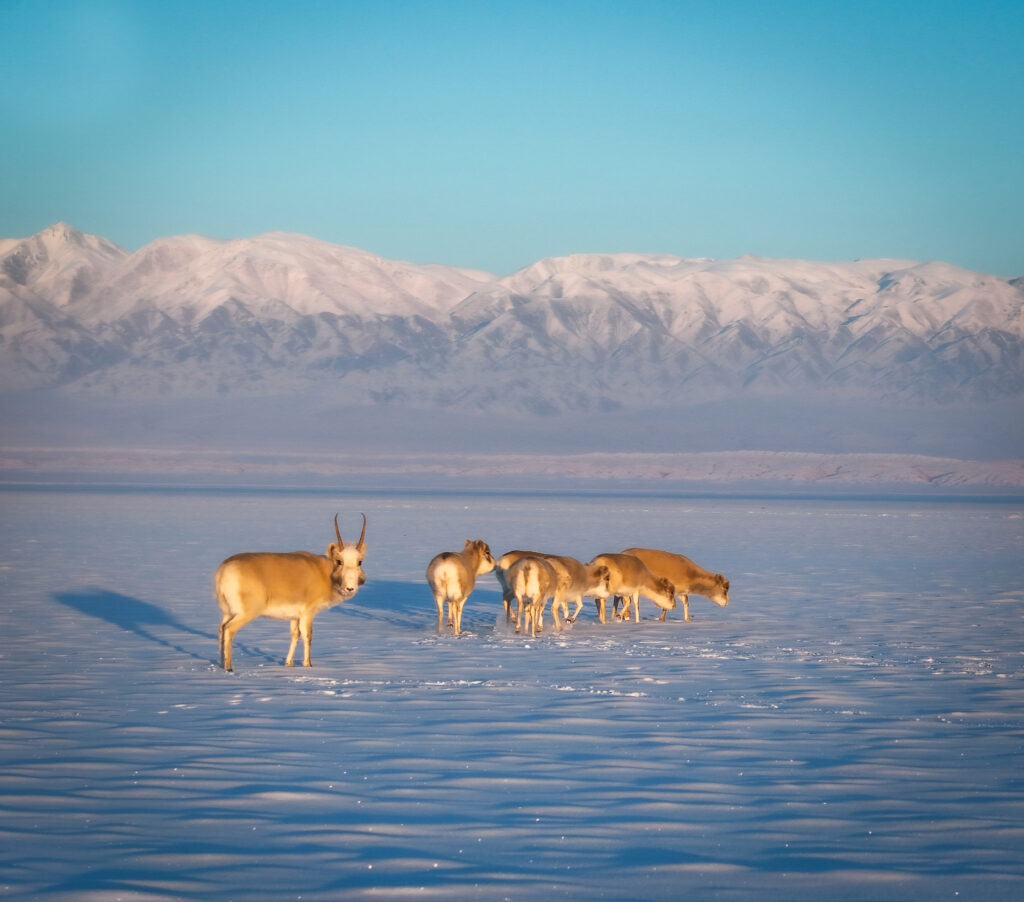WWF-Mongolia, in partnership with the Community Conservationists Network for Saiga, has successfully completed its annual monitoring of the saiga population. The assessment, conducted in late October 2024, employed the internationally recognized line transect method to survey the entire saiga range, covering approximately 40,006 square kilometers across 18 soums (districts) in four aimags (provinces) of Mongolia.
The latest estimate reveals a population of 23,215 Mongolian saigas, marking a significant increase from the 15,540 recorded the previous year—a remarkable growth of 49%. Notably, the survey identified 1,660 individuals in three isolated subpopulations within the species’ historical range, a substantial rise compared to just 405 individuals recorded in 2021.

This achievement demonstrates the success of WWF-Mongolia’s conservation efforts, carried out in close collaboration with national and local stakeholders. These efforts have significantly contributed to the recovery of the saiga population while enabling the species to reestablish itself in its historical range.

B. Chimeddorj, Conservation Director of WWF-Mongolia, stated, “Recent conservation initiatives focused on strengthening law enforcement, improving habitat management, and engaging local communities have played a significant role in supporting the recovery of the Mongolian saiga population. In addition, targeted communication efforts to deliver holistic messages about the species’ conservation and its ecological importance have been instrumental in raising awareness among local communities and the wider public. However, the Mongolian saiga remains highly vulnerable. Emerging challenges, such as the spread of infectious diseases and the expansion of linear infrastructure, are exacerbating existing threats like habitat degradation caused by overgrazing, poaching, and extreme weather events.”

The Mongolian saiga has experienced severe population declines in the past, including a catastrophic crash to just 750 individuals in 2003 due to natural disasters like drought and dzud (harsh winter snowstorms). Another devastating blow occurred in 2017 with an outbreak of Peste des petits ruminants, a deadly disease that significantly impacted the population.
Chimeddorj further emphasized, “Urgent and sustained conservation actions are essential to secure the future of this endangered species and to prevent its extinction.”
This statement highlights both the progress made through conservation efforts and the pressing need to address ongoing and emerging threats to ensure the long-term survival of the Mongolian saiga.
The Mongolian saiga has made significant strides in population recovery thanks to targeted conservation efforts, including habitat management, law enforcement, and community engagement. However, the species remains vulnerable to threats like diseases, habitat degradation, and infrastructure expansion. Urgent and sustained actions are essential to secure its survival and prevent extinction.
View the overall population numbers of the Mongolian saiga, click here.
Photo credit: WWF-Mongolia
